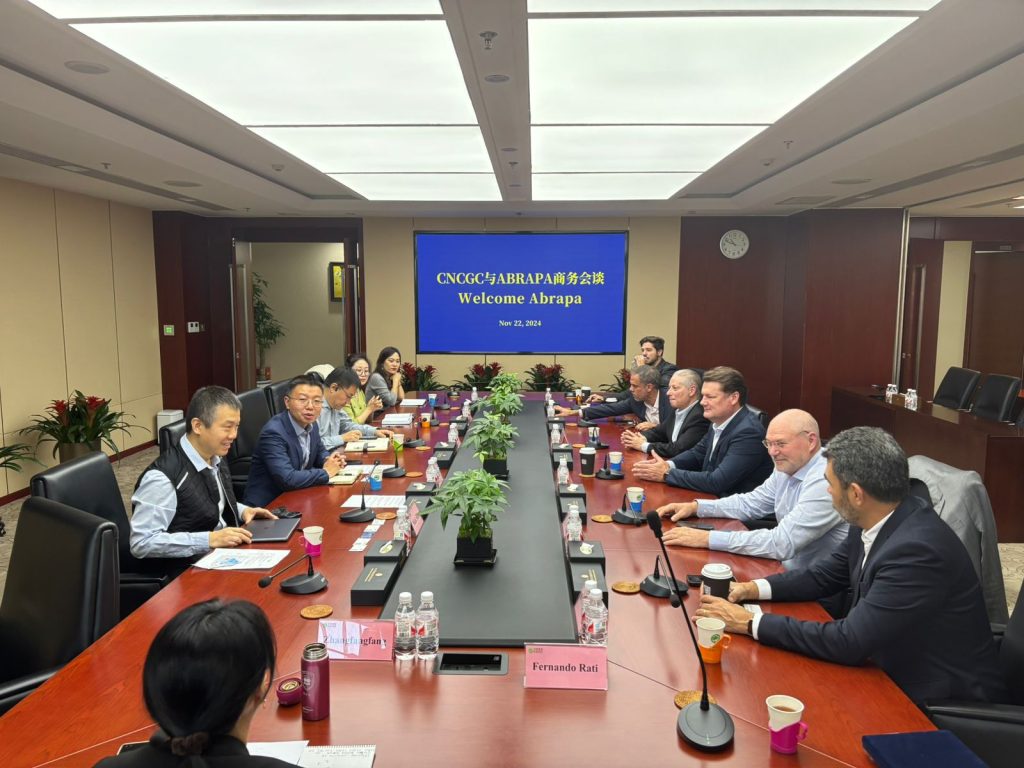Vietnam’s preference for Brazilian cotton and partnership with Chinese organizations mark Cotton Brazil’s ninth mission of the year
Calendar and Events |
Cotton Brazil, the Brazilian cotton promotion program of the Brazilian Cotton Growers Association (Abrapa), concluded the Vietnam-China Mission on a positive note. Throughout the week, events, technical visits and meetings were held that demonstrated the Vietnamese textile industry’s preference for Brazilian cotton and the opening of the Chinese market for partnerships with Brazil.
This was the ninth international mission organized by Cotton Brazil in partnership with the Brazilian Trade and Investment Promotion Agency (Apex Brasil) and the National Cotton Shippers Association (Anea).

The Brazilian delegation, consisting of eight representatives, had a number of engagements in both countries from November 17th to 23rd with the aim of further intensifying business. China and Vietnam accounted for 64% of Brazil´s cotton exports in the 2023/24 marketing year.
One of the highlights of the agenda for Vietnam was the confirmation of its preference for Brazilian cotton.
“We met with Vietnamese mill owners that use up to 80% of our cotton in their spinning blends. It is a very important achievement for us, because we are talking about the second largest textile exporter in the world”, said Alexandre Schenkel, president of Abrapa.

In 2023/24, Brazil increased its share of Vietnamese cotton imports from 15% to 27%, with total purchases of 392 thousand tonnes. As a result, the country was the second largest importer of Brazilian cotton during the period.
Three cities were visited by the Brazilian delegation in Vietnam. In Hanoi, the capital, the first engagement was a technical visit to the Tra Ly Hưng Yen spinning mill, followed by a working meeting with the Vietnam Cotton and Spinning Association (VCOSA), the Vietnam National Textile and Garment Group (Vinatex) and Brazilian diplomats. Hanoi was also where an edition of the “Cotton Brazil Outlook” seminar was held, aimed at business owners, mill owners and investors.
Then, in Hue, Cotton Brazil held a lunch meeting with 12 of the main local textile mills, followed by a technical visit to a Vinatex spinning mill.
In Ho Chi Minh City, the Phu Hoang Spinning mill was visited by the delegation and a new edition of the “Cotton Brazil Outlook” was held in the city, mobilizing 92 participants – including mill owners, business owners, investors, authorities and diplomats.
The Brazilian ambassador in Hanoi, Marco Farani, participated in the events in Vietnam, reinforcing the presence of the Brazilian government in the Cotton Brazil initiative.
“An important fact is that in Vietnam we were able to interact with companies that operate not only in the country, but also in South Korea, Japan and China. And we proved that the predominant perception is with regard to the improvement of Brazilian cotton especially in terms of quality indicators”, explained Mr. Schenkel.
On arrival in the Chinese capital (Beijing), the delegation prioritized relationship strengthening with Chinese organizations and companies that represent the country’s textile sector. On the first day, the engagement was with Chinatex, currently one of the largest importers of Brazilian cotton. Following that, meetings were held with the China National Cotton Group Corporation (CNCGC), China National Cotton Exchange (CNCE), the China Cotton Textile Association (CCTA) and the China Cotton Association (CCA)
China remains the main importer of Brazilian cotton. In the 2023/24 marketing year, it took 49% of all Brazilian exports, totaling 1.138 million tonnes. This season, Brazil achieved a historic feat in China-Brazil relations: it was responsible for 40% of China’s total cotton imports. This came as the result of a 203% increase in purchases of Brazilian cotton.

